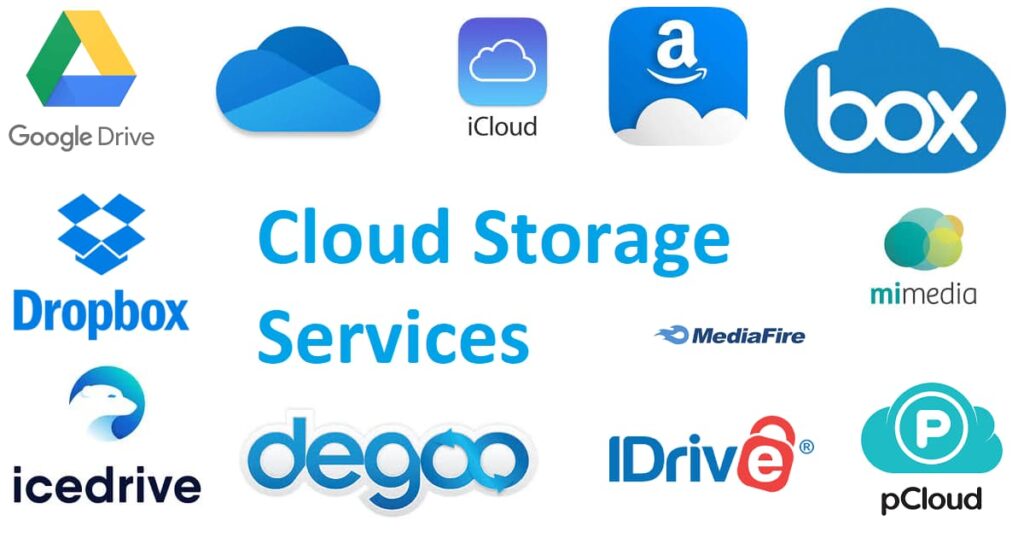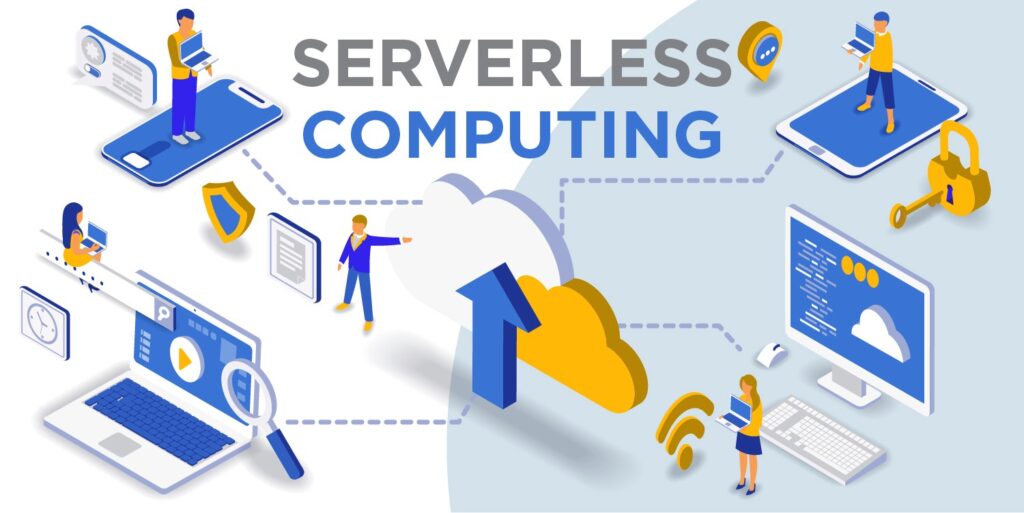Mark Tech – Kickstart your AI development without draining your budget! The journey through cloud services can be expensive, but there are smart strategies to keep costs low while still hitting your targets.
From selecting the right cloud provider to utilizing pre-trained models, these ten strategies will help you make the most of your resources.
You’ll discover how to effectively manage expenses while building innovative AI solutions that don’t compromise on quality.
Ready to explore cost-effective methods for your AI projects? Let’s dive into the practical steps you can take to maximize your budget and achieve your AI ambitions.
Key Takeaways
- Choose the right cloud provider by comparing costs, reliability, and AI-specific features.
- Optimize resource allocation through auto-scaling and serverless computing to minimize costs.
- Leverage pre-trained AI models to reduce development time and expenses.
- Implement containerization and orchestration for efficient deployment and management of AI applications.
- Adopt pay-as-you-go pricing models to align costs with actual usage and avoid overprovisioning.
Choose the Right Cloud Provider

When selecting a cloud provider for AI development, cost-effectiveness should be a top priority. Your cloud provider selection can greatly impact your project’s budget and success. Start by conducting a thorough pricing comparison among major providers like AWS, Google Cloud, and Azure. Consider not only the base costs but also potential savings through reserved instances or spot pricing.
Service reliability is essential for AI workloads, so evaluate each provider’s uptime guarantees and historical performance. Don’t overlook customer support quality, as prompt assistance can save valuable development time. Assess compliance considerations to confirm the provider meets your industry’s regulatory requirements.
Perform a detailed feature evaluation, focusing on AI-specific services and tools offered by each provider. Check regional availability to minimize latency for your target users. Run performance benchmarks to compare processing speeds and resource efficiency across providers.
Examine scalability options to accommodate your project’s growth.
Optimize Resource Allocation
To optimize resource allocation for AI development, you’ll want to focus on two key strategies.
First, implement auto-scaling cloud instances to automatically adjust computing power based on your project’s current needs.
Second, consider adopting serverless computing, which can greatly reduce costs by eliminating the need for constant server maintenance and allowing you to pay only for the exact resources you use.
Auto-Scaling Cloud Instances
Flexibility lies at the heart of auto-scaling cloud instances for AI development. You’ll find that this approach allows you to dynamically adjust your computing resources based on real-time demand. By implementing effective scaling policies, you can enhance cloud performance while minimizing costs.
Start by analyzing your usage patterns and performance metrics to determine the appropriate instance types for your AI workloads. Set resource limits to prevent unexpected overruns and conduct regular cost analyses to guarantee you’re maximizing your budget. Auto-scaling enables automatic instance provisioning, so you’ll always have the right amount of computing power available.
When designing your deployment strategies, consider the elasticity benefits of auto-scaling. You can rapidly scale up during peak periods and scale down during lulls, making sure you’re only paying for the resources you actually need. This approach is particularly valuable for AI development, where workload requirements can fluctuate dramatically.
To get the most out of auto-scaling, regularly review and adjust your scaling policies. Monitor your cloud performance closely and fine-tune your settings to achieve the best balance between cost-efficiency and computational power for your AI projects.
Serverless Computing Adoption
Serverless computing takes resource optimization a step further than auto-scaling. With this approach, you don’t manage servers at all; instead, you focus solely on your code.
Serverless architecture benefits include improved cost efficiency and enhanced development speed. It’s particularly well-suited for event-driven applications, allowing you to respond to user actions or system events without maintaining idle resources.
When adopting serverless computing, consider these key factors:
- Scalability considerations: Verify your application can handle sudden spikes in demand without performance degradation.
- Security challenges: Implement robust authentication and encryption measures to protect your serverless functions.
- Vendor lock-in: Be aware that migrating between cloud providers can be complex due to platform-specific features.
To maximize the potential of serverless computing, focus on performance metrics and integration strategies. Monitor execution times and memory usage to optimize your functions.
Implement effective logging and tracing to troubleshoot issues quickly. Explore various use cases where serverless shines, such as data processing, chatbots, and IoT applications.
Leverage Serverless Computing

One powerful strategy for reducing AI development costs is leveraging serverless computing. This approach allows you to run your AI applications without managing the underlying infrastructure, greatly cutting operational expenses.
Serverless architecture benefits include automatic scaling, pay-per-use billing, and reduced maintenance overhead.
By adopting event-driven computing, you can create more efficient AI systems that only consume resources when needed. This model is particularly useful for intermittent workloads or unpredictable traffic patterns common in AI applications. You’ll save on idle server time and optimize resource allocation.
To implement serverless AI effectively, focus on breaking down your applications into smaller, independent functions. This modular approach enhances flexibility and allows for easier updates and scaling.
Consider using cloud providers’ AI and machine learning services in conjunction with serverless platforms to further streamline development.
When designing your serverless AI architecture, pay attention to potential cold start issues and optimize function execution times. Implement proper error handling and monitoring to guarantee reliability.
Implement Effective Data Management
Effective data management lies at the heart of cost-efficient AI development. As you build your AI solutions, implementing a robust data governance strategy is essential. This guarantees data quality, security, and privacy throughout the data lifecycle.
You’ll need to establish clear policies for data integration, accessibility, and architecture to streamline your AI workflows.
To implement effective data management, focus on these key areas:
- Data quality and cleansing: Verify your data is accurate, consistent, and free from errors. This will improve your AI models’ performance and reduce processing time.
- Data security and privacy: Implement strong encryption, access controls, and compliance measures to protect sensitive information and meet regulatory requirements.
- Data warehousing and visualization: Create a centralized repository for your data and use visualization tools to gain insights quickly, enabling faster decision-making.
Utilize Pre-trained AI Models
Pre-trained AI models can considerably reduce your development costs and time-to-market. By leveraging transfer learning benefits, you’ll tap into existing knowledge, saving time and resources.
Explore AI model libraries to find suitable pre-trained models for your specific needs. You can then apply model customization techniques to fine-tune these models for your unique use case.
Consider collaborative model training approaches to further enhance your AI capabilities. This can involve partnering with other organizations or utilizing open-source communities.
When implementing pre-trained models, focus on deployment strategies that align with your infrastructure and scalability requirements. Regularly conduct model performance evaluations to guarantee the best results and identify areas for improvement.
As you utilize pre-trained models, don’t overlook ethical AI considerations. Verify your AI applications adhere to responsible AI principles and address potential biases.
Be prepared to face integration challenges, such as compatibility issues or data format discrepancies. Look for industry-specific models that cater to your particular sector’s needs.
Stay informed about future trends analysis in pre-trained models to anticipate upcoming advancements and maintain a competitive edge in AI development.
Embrace Containerization and Orchestration
Containerization and orchestration technologies are game-changers in AI development, offering considerable cost savings and operational efficiencies. By embracing these tools, you’ll streamline your development process and enhance your ability to scale AI applications.
Container orchestration platforms like Kubernetes allow you to manage microservices architecture effectively, enabling you to build cloud native applications that are more resilient and easier to maintain.
Implementing containerization and orchestration brings several benefits:
- Improved resource isolation, leading to better performance and security
- Simplified deployment strategies, allowing for faster and more reliable updates
- Enhanced scalability, helping you overcome common challenges in AI workloads
You’ll find that integrating these technologies into your CI/CD pipelines can considerably accelerate your development cycles. By leveraging orchestration tools, you can automate many aspects of your AI infrastructure, from deployment to scaling.
Additionally, adopting a service mesh architecture can improve communication between your containerized services, enhancing overall system reliability.
Remember to prioritize container security as you embrace these technologies. Regularly update your containers and implement best practices to protect your AI applications from potential vulnerabilities.
Monitor and Analyze Usage
To effectively manage your AI development costs, you’ll need to closely monitor and analyze resource usage.
Start by tracking resource consumption across your AI projects, which will help you identify cost-saving opportunities and areas of inefficiency.
Track Resource Consumption
Vigilance is key when it comes to tracking resource consumption in AI development. By implementing robust resource tracking and consumption analysis mechanisms, you’ll gain valuable insights into how your AI projects utilize cloud resources. This knowledge permits you to optimize costs and improve overall efficiency.
To effectively track resource consumption, focus on these key areas:
- CPU and GPU usage: Monitor the utilization of computing resources to identify potential bottlenecks or underutilized instances.
- Memory consumption: Keep tabs on RAM usage to guarantee your AI models aren’t experiencing memory leaks or inefficient data handling.
- Storage utilization: Track data storage patterns to optimize capacity planning and reduce unnecessary costs.
Implement automated tools that provide real-time visibility into resource consumption across your AI development pipeline. These tools can help you identify trends, anomalies, and opportunities for optimization.
Regularly review consumption reports and set up alerts for unusual spikes or prolonged high usage periods.
Identify Cost-Saving Opportunities
Building on your resource tracking efforts, it’s time to leverage that data to identify cost-saving opportunities. Analyze your usage patterns and performance metrics to pinpoint areas where you can optimize costs without compromising quality.
Consider implementing collaboration tools to streamline workflows and reduce unnecessary resource consumption. Invest in team training to enhance efficiency and minimize costly errors.
Improve your budget forecasting by using historical data and predictive analytics. Evaluate your current development frameworks and consider alternatives that may offer better cost-efficiency.
Assess the potential benefits of cloud migration, weighing the initial investment against long-term savings. Don’t overlook vendor negotiations as a means to reduce costs. Armed with usage data, you’re in a stronger position to negotiate better rates or terms.
Review your project management processes to identify and eliminate bottlenecks that may be driving up expenses. Address security concerns proactively to avoid costly breaches or compliance violations.
Stay informed about compliance regulations to avoid fines and guarantee your AI development aligns with industry standards. By continuously monitoring and analyzing your resource usage, you’ll uncover new cost-saving opportunities and maintain a lean, efficient AI development process.
Optimize Workload Distribution
Effective workload distribution hinges on your ability to monitor and analyze resource usage. By implementing robust monitoring tools, you’ll gain insights into how your AI workloads consume cloud resources. This data enables you to make informed decisions about workload balancing and resource optimization, ultimately reducing costs and improving performance.
To optimize your workload distribution, focus on these key areas:
- Resource utilization: Track CPU, memory, and storage usage across your AI tasks. Identify underutilized resources and adjust your allocation accordingly.
- Workload patterns: Analyze temporal patterns in your AI workloads to determine peak usage times. This information helps you schedule resource-intensive tasks during off-peak hours, maximizing efficiency.
- Cost analysis: Monitor the cost implications of different workload distributions. Compare the expenses of running tasks on various instance types or regions to find the most cost-effective configuration.
Adopt Pay-as-You-Go Pricing Models
One of the most flexible and budget-friendly approaches to AI development is adopting pay-as-you-go pricing models. This strategy allows you to align your costs with actual usage patterns, providing unparalleled pricing flexibility.
By only paying for the resources you consume, you’ll achieve greater resource efficiency and avoid overprovisioning.
To make the most of this model, you’ll need to focus on accurate cost forecasting and diligent budget management. Analyze your consumption trends regularly to identify opportunities for optimization.
Many cloud providers offer various pricing tiers, so compare services to find the best fit for your needs. Take advantage of billing transparency features to track your spending in real-time and set spending limits to prevent unexpected costs.
When implementing pay-as-you-go models, you’ll gain better control over your AI development expenses. You can easily scale resources up or down based on project requirements, ensuring you’re not locked into long-term commitments.
This approach also encourages experimentation, as you can test new ideas without significant upfront investments. By leveraging pay-as-you-go pricing, you’ll maximize your budget while maintaining the flexibility to adapt to changing AI development needs.
Implement Automated Scaling
Automated scaling is a game-changer for cost-effective AI development. It allows you to dynamically adjust your computing resources based on demand, ensuring you’re not overpaying for idle capacity or suffering from performance bottlenecks during peak times.
By implementing automated scaling, you’ll optimize your cloud infrastructure for both cost and performance.
To effectively implement automated scaling for your AI projects:
- Set up load balancing to distribute workloads evenly across multiple instances, preventing any single resource from becoming overwhelmed.
- Define scaling policies based on specific metrics like CPU usage, memory consumption, or request rates to trigger automatic resource allocation or deallocation.
- Utilize performance optimization techniques, such as caching frequently accessed data or pre-warming instances, to reduce scaling latency and improve overall system responsiveness.
Explore Open-Source AI Tools

Open-source AI tools offer a wealth of opportunities for developers looking to cut costs without sacrificing quality. You’ll find numerous options with diverse functionalities, each backed by active communities providing support and continuous improvements.
When exploring these tools, it’s essential to conduct a thorough tool comparison, considering factors like performance benchmarks, user experience, and development speed.
To make the most of open source benefits, you should evaluate the customization options available. This flexibility allows you to tailor the tools to your specific needs, potentially accelerating your AI development process.
However, be aware of potential integration challenges when incorporating open-source solutions into your existing infrastructure.
Don’t overlook licensing considerations, as they can impact your project’s long-term viability and commercialization prospects.
Additionally, assess the security implications of each tool, ensuring they meet your organization’s standards.
Conclusion
You’ve got the tools to develop AI cost-effectively in the cloud. By choosing the right provider, optimizing resources, and leveraging serverless computing, you’ll maximize efficiency. Don’t forget to use pre-trained models, monitor usage, and explore open-source options. With automated scaling and pay-as-you-go pricing, you’ll keep costs in check. Implement these strategies, and you’ll be well on your way to sustainable, budget-friendly AI development in the cloud.

